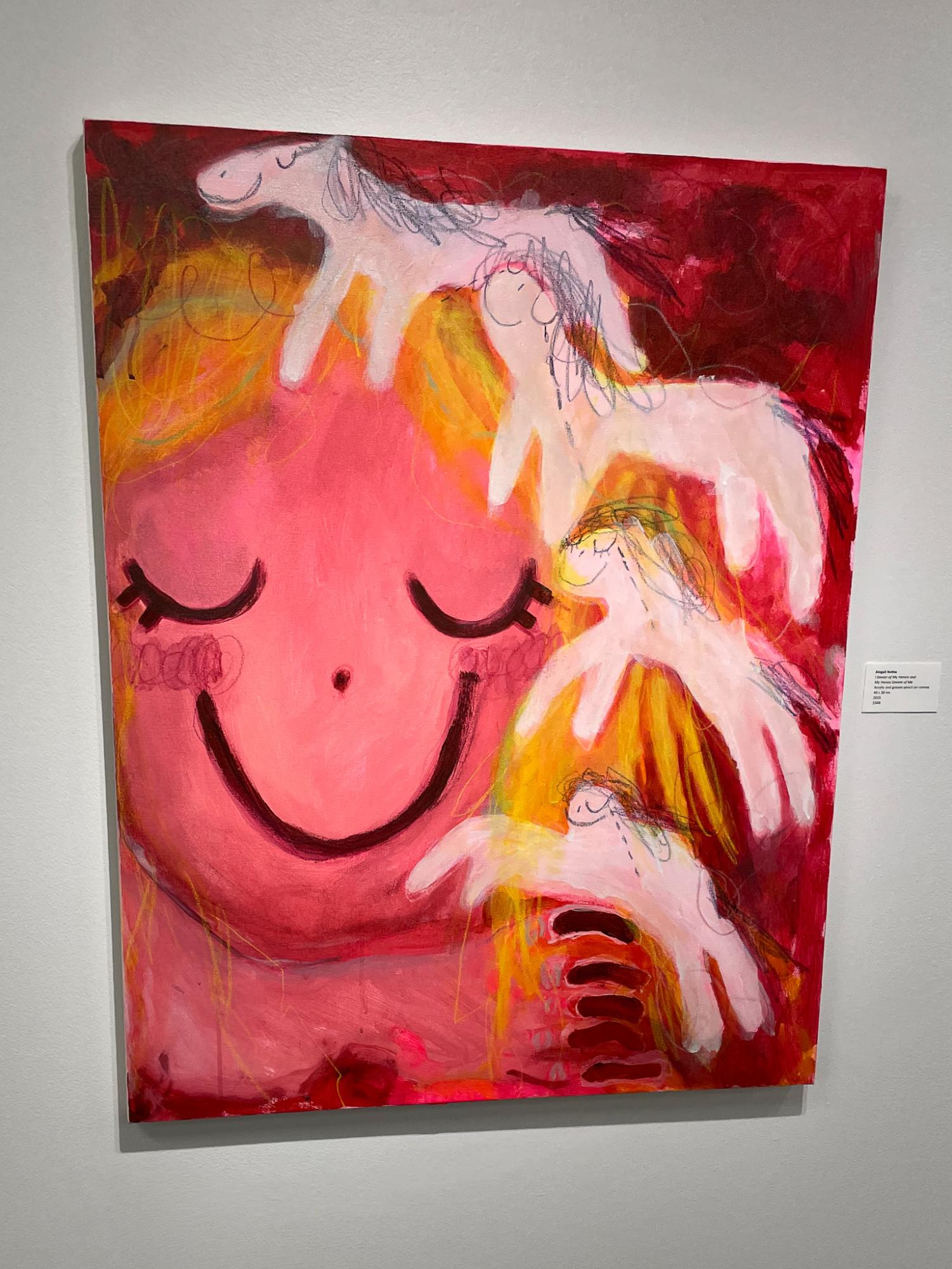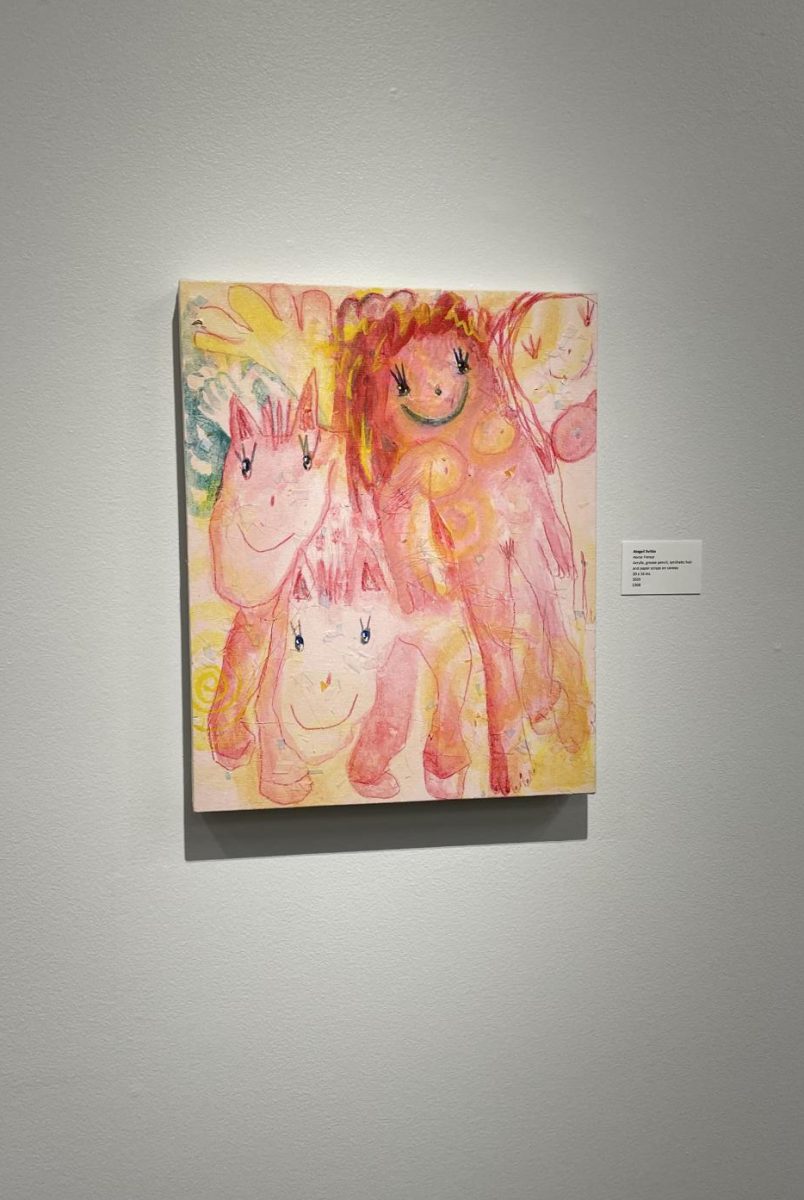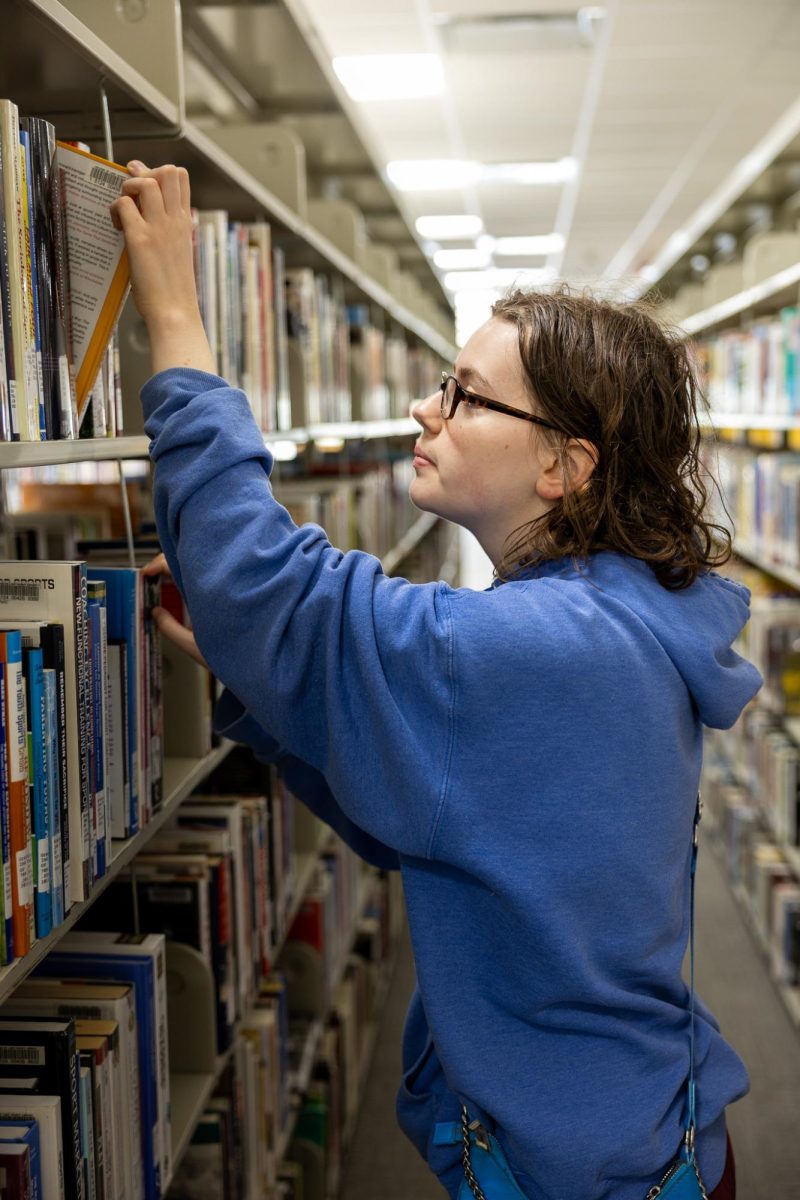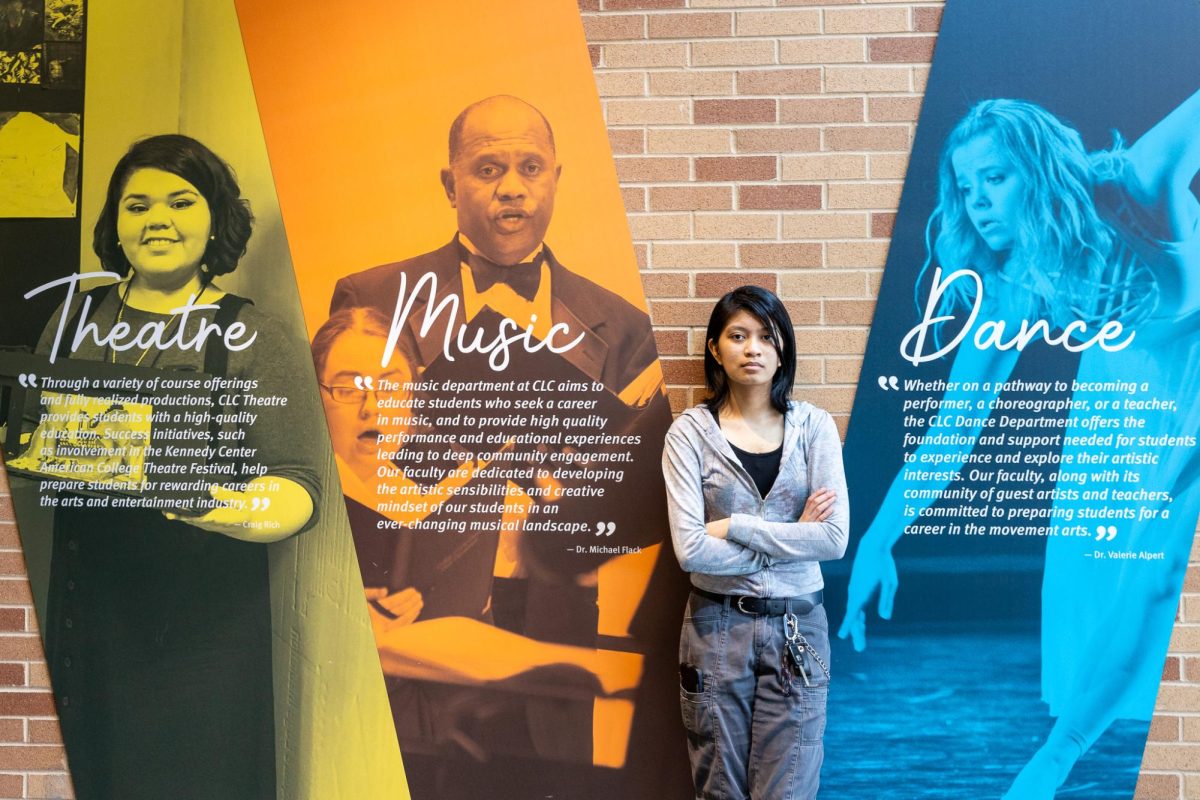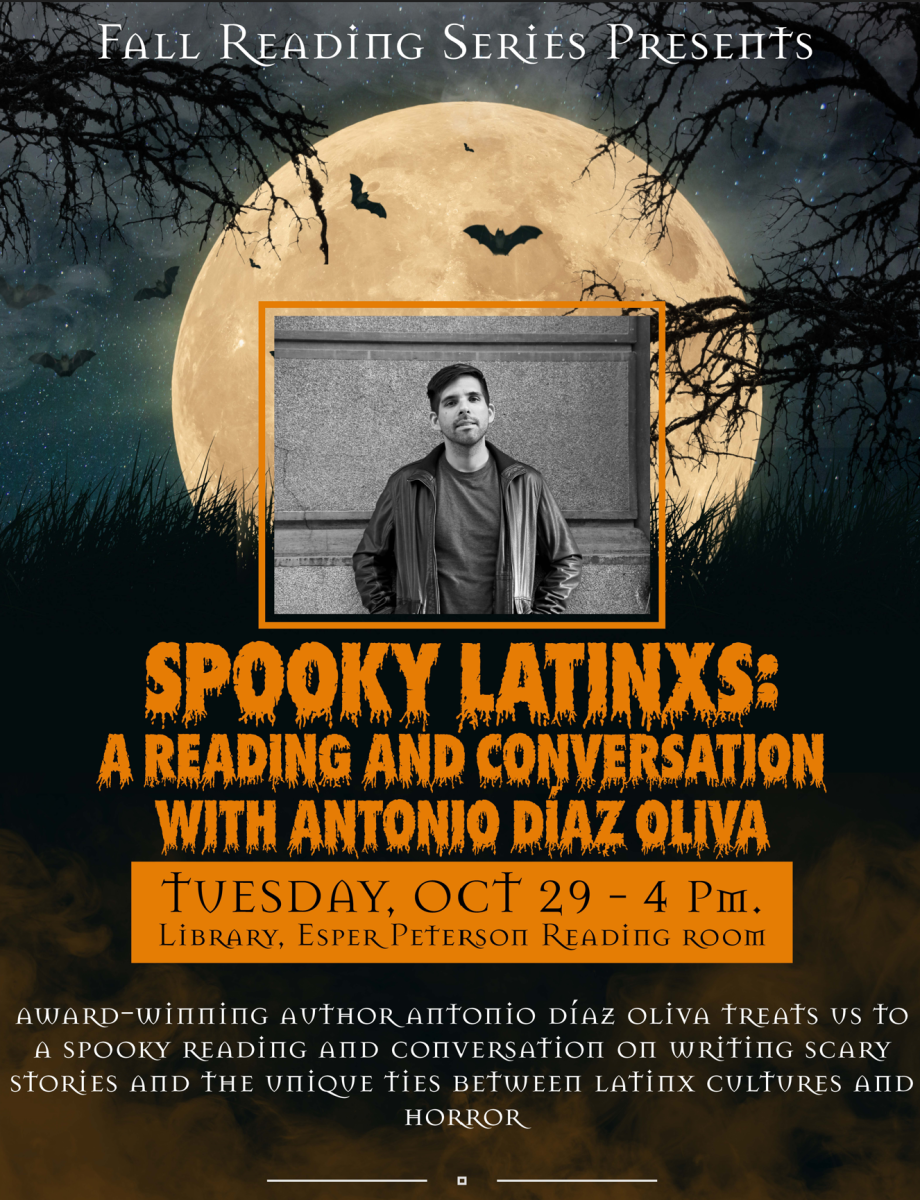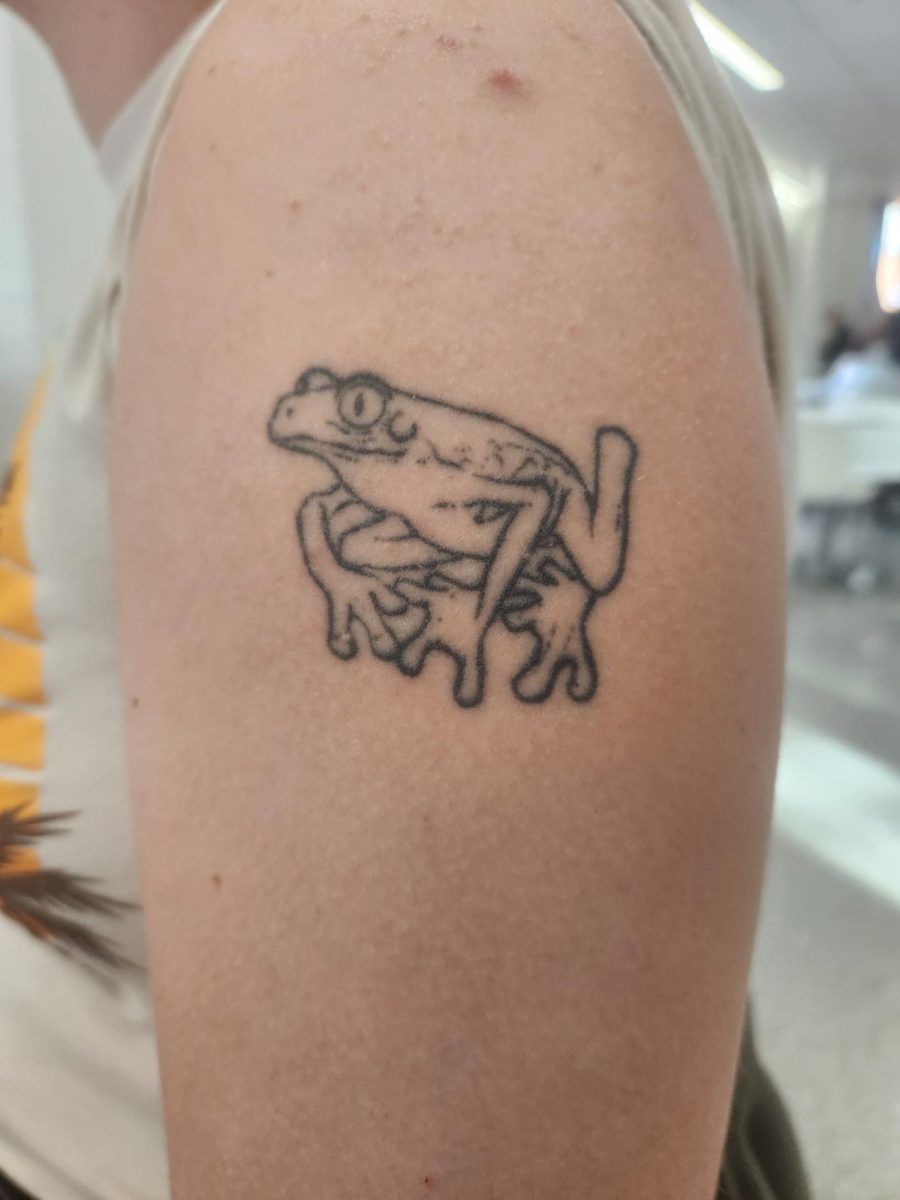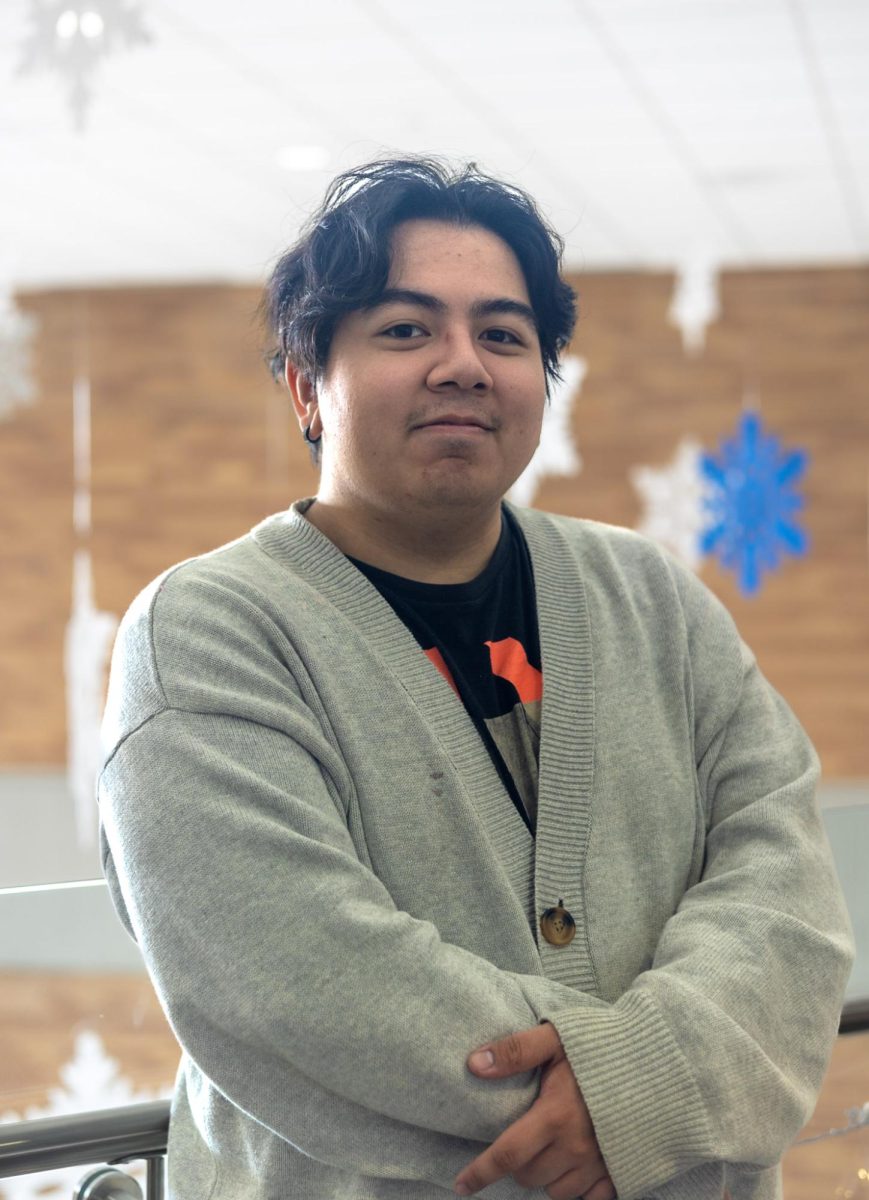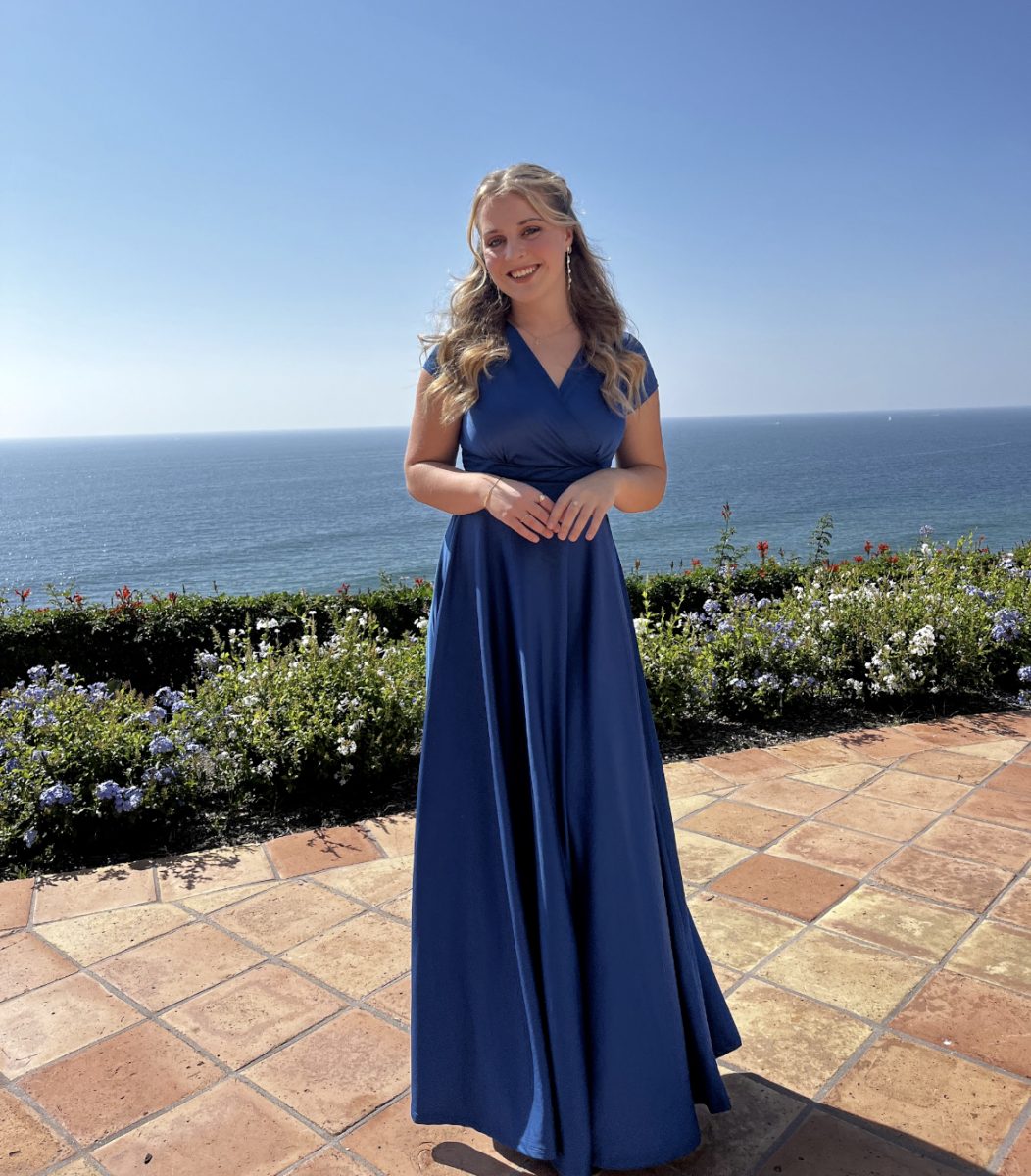It’s hard to capture all of the ups and downs of transitioning from girlhood into womanhood, but artist Abigail Svitko accomplishes this in her most recent feature in the “Evolve” exhibit at CLC’s Robert T. Wright Gallery.
The show on display was a unique one, put together by College of Lake County instructor David Linneweh and gallery curator Ann Rintz. Showcasing six recently discovered artists, the gallery was alive with evocative and thought provoking works.
Abigail Svitko’s pieces immediately call viewers’ attention with bold, childlike colors and lighthearted – yet intentional – marks. As soon as you walk into the gallery, you feel a sense of urgency to get closer to her artwork. As inspiring as it is from afar, it is even more thought-provoking close up. Her work has an inherently innocent exterior, but as you approach it, her themes become clearer. Things we often avoid talking about in public, such as bodily changes, periods, and breast feeding, are abstractly observed through Svitko’s work. In this way, she removes the stigma surrounding womanly “growing pains” and gives her audience access to exploration of the unmentionable.
Despite underlying heavy themes, Svitko likes to keep her work lighthearted, especially when using colors.
“I think I tend to lean towards a lot of pinks and reds,” Svitko said. “I don’t use black in my art work (unless it’s a graphite drawing). I like to upkeep a fun and humorous energy in my work.”
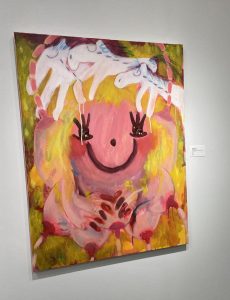
Svitko’s love for the arts started in middle school and truly blossomed in high school. Art was a form of escapism for her, and she encourages people to lean into the process of making mistakes and even creating “bad art.” Knowing that creativity was what she wanted to do was not the problem, it was choosing which of many creative paths to follow.
“My parents did not have the luxury to pursue a college education, so they really encouraged me to get a degree in something I loved doing,” Svitko said. “I became hyperfixated on it, and I decided to pursue a BFA at Indiana University Northwest.”
Although her art process is ever changing, Svitko believes that her art will always surround womanhood.
Svitko connected her works on display with her own experiences with girlhood and growing up. She said that simply observing girlhood can be interesting. One connection she made to her work was the idea of “horse girls.” This phrase can be used in multiple formats, both as a compliment or a slight. The term was largely used in the early 2000s to describe girls who had an obsessive love for horses. Its negative connotations gradually grew until being a “horse girl” became associated with social awkwardness and an uncomfortable level of nerdiness. Many of Svitko’s works feature dreamlike horse figurines with childlike faces, inspirations from her own observations.
“To be a “horse girl” is to be a weird girl and an outsider,” Svitko said. “I think comparing this to paintings you look at in museums (say the Getty or The Art Institute) Horses are depicted as such masculine beings, in fact, it’s associated with masculinity. A man riding a horse to save the day. Yet when a girl is associated with a horse, it’s never when she’s saving the day.”
Svitko addressed challenges that she has experienced as a young artist, indicating that believing in herself was one of the biggest stumbling blocks. Although she has had recent successes and recognition as an emerging artist, Svitko also said rejection comes with the job. She encourages other artists to push through these moments of hurt and loneliness and to “surround yourself with like minded people and step outside your comfort zone. You’ll then realize you aren’t so alone.”

